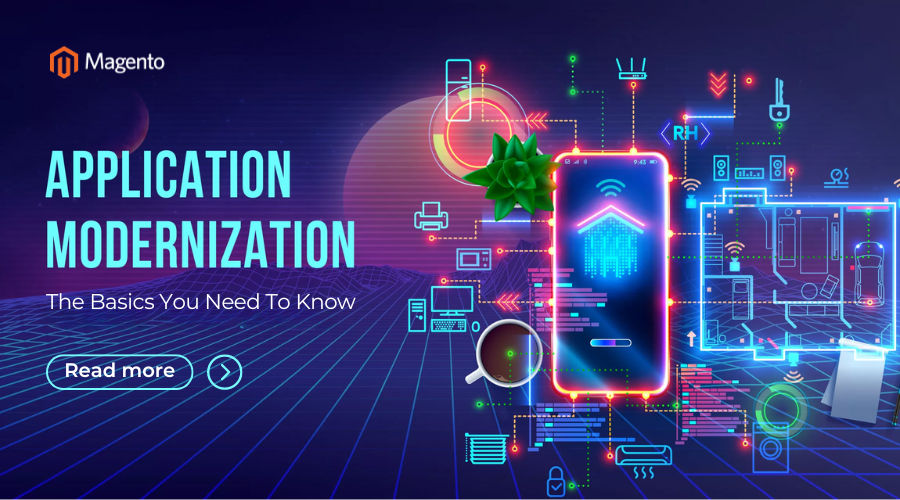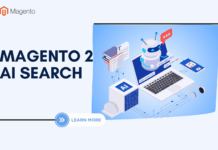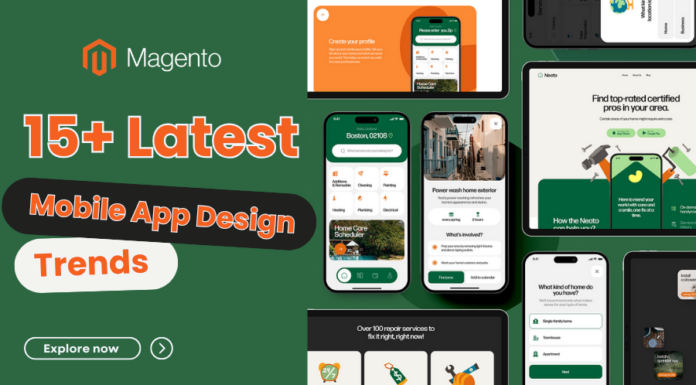
Application modernization is the process of updating and improving legacy software applications to take advantage of new technologies, frameworks, and cloud platforms. As technology rapidly advances, modernizing applications has become crucial for businesses to remain competitive, efficient, and innovative in today’s fast-paced digital landscape.
Table of Contents
I. Why you need to modernize applications?
There are several compelling reasons why organizations decide to modernize their existing business applications. Let’s examine.
1. Enhanced user experience
Modern applications, made by companies like Modlogix.com utilize newer UI/UX design principles and patterns to create intuitive, visually appealing, and human-centered interfaces. This leads to greatly improved employee productivity as well as higher customer satisfaction and engagement.
2. Increased development velocity
Newer programming languages, frameworks, design paradigms, and cloud infrastructure allow for much faster feature development. This results in more productive engineering teams and accelerated time-to-market for new capabilities.
3. Significant cost savings
Migrating legacy applications to cloud platforms eliminates large upfront hardware investments. Managed services and autoscaling capabilities provide ongoing cost optimizations as well.

4. Flexible scalability
Cloud-native applications scale up and down automatically to handle spikes and fluctuations in traffic and demand. This prevents resource scarcity issues and ensures consistent performance.
5. Enhanced security posture
Modern application platforms and cloud providers have robust information security capabilities built-in out-of-the-box. Applications running in these environments can leverage the latest security standards for encryption, identity management, monitoring, and access controls.
6. Unlocking innovation potential
Cutting-edge capabilities like artificial intelligence, machine learning, augmented reality, and blockchain can transform applications to be smarter, more connected, and more automated. Modernization unlocks the potential to build innovative capabilities right into apps.
In summary, business application modernization delivers tangible improvements in customer and employee experiences, developer productivity, cost efficiency, resilience, and future innovation potential.
II. Core pillars of application modernization
3 fundamental pillars form the foundation of any legacy application modernization initiative:
#1. Code refactoring & re-architecture
Changes to legacy application code are carried out by migrating that code to a modern language, framework, architectural pattern, and design principles besides testing strategies, and third-party dependencies. The result is long-term maintainability, extensibility, and fast changes in velocity.
#2. Cloud migration
Applications are methodically re-platformed to run on modern cloud computing models such as infrastructure as a service (IaaS), platform as a service (PaaS), and software as a service (SaaS). This ensures scalability is managed, services are provided, and consumers are billed only for the resources they use.

#3. Data and API integration
Modern data silos with API gateways, messaging systems, and streaming data pipelines, the less disparate silos. This in turn enables the creation of a single version of truth, which is then used as a platform or data source for downstream analytics, reporting, and AI use cases.
This set of pillars represents the organic growth of legacy applications to cloud-native and modern applications which are the cornerstone of modern cloud-based applications that are customized to today’s market and customer expectations.
III. Main strategies for application modernization
There are several viable strategic approaches to modernizing legacy applications, each with its own pros and cons:
1. Replatforming (Lift and Shift)
Present applications are migrated as-is without code changes to the most popular cloud platforms like AWS, Azure and GCP. This is a faster and low-risk approach.
2. Re-architecting (Refactor)
Applications are redesigned and reengineered to become cloud-native, embracing a microservices architecture approach, with inherent resilience, scalability, and ease of maintenance. Legacy code is slowly but surely changed through the process of refactoring.
3. Rebuilding (Redevelop)
Each application is built from scratch using today’s languages, frameworks, cloud services, design patterns, and strategies for development. This is the most revolutionary yet highly expensive way.
4. Retiring (Decommission)
Outdated legacy applications that no longer meet business needs are safely shut down so as to make the application portfolio easier to manage. Either they are ported or they are abandoned.
The best approach is dependent on the budget, timeframes, risk profile, and the predicted lifespan of the application. Many organizations apply the hybrid approach that involves incremental modernization to accommodate business agility.
IV. Key enabling technologies
Here are some of the most impactful technologies for upgrading and future-proofing legacy applications:
1. Containers & container orchestration
Docker containers enable consistent, portable, and efficient application deployment into any environment. Container orchestrators like Kubernetes dynamically manage and scale container workloads.
2. Low-code development platforms
Tools like Appian, Mendix, and OutSystems accelerate building cloud-native applications with minimal hand-coding. This expedites delivery with less technical skills needed.

3. Infrastructure as code
Practices like declarative infrastructure provisioning and policy-based configuration management automate and streamline environment setup.
4. Continuous delivery pipelines
CI/CD (continuous integration / continuous delivery) pipelines enable automated testing and release processes for faster, lower-risk delivery of updates.
5. Managed cloud services
Consuming managed platform services for security, data, storage, networking, containers, and more offloads undifferentiated tasks to the cloud provider.
In summary, leveraging these modern technologies and paradigms can massively accelerate the modernization of legacy applications while optimizing long-term agility.
Key takeaways
Here are the major key takeaways around application modernization:
Modernization of apps means enhanced user experience, developer speed, costs, scalability, and security.
- Strategies are built on re-platforming, refactoring, rebuilding, and retiring.
- Core pillars are update of code, migration to the cloud, and data integration.
- The main technologies that we `will` use are containers, orchestration, IaC, and CI/CD.
- The successful modernization will deliver the apps that go with business goals.
The optimal approach to application modernization along with the roadmap and the latest technologies can mutate old-fashioned, obsolete legacy systems into modern, robust cloud-native applications that will keep on providing value for many years to come. Through a study of the existing applications and clear business objectives, companies can plan an iterative modernization path that will provide maximum profit over time.












![[SALE OFF] Discount 30% All Premium Extensions On Christmas And New Year 2025 christmas-and-new-year-2025](https://landofcoder.b-cdn.net/wp-content/uploads/2024/12/christmas-and-new-year-2025-1-218x150.png)






